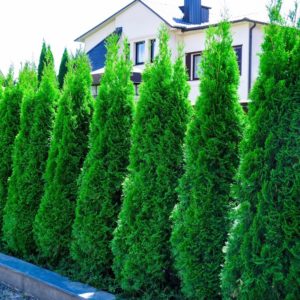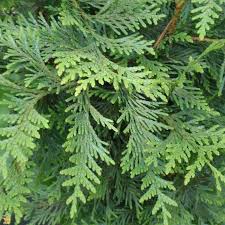Donna’s Plant of the Month – Emerald Green Arborvitae
go.ncsu.edu/readext?697892
en Español / em Português
El inglés es el idioma de control de esta página. En la medida en que haya algún conflicto entre la traducción al inglés y la traducción, el inglés prevalece.
Al hacer clic en el enlace de traducción se activa un servicio de traducción gratuito para convertir la página al español. Al igual que con cualquier traducción por Internet, la conversión no es sensible al contexto y puede que no traduzca el texto en su significado original. NC State Extension no garantiza la exactitud del texto traducido. Por favor, tenga en cuenta que algunas aplicaciones y/o servicios pueden no funcionar como se espera cuando se traducen.
Português
Inglês é o idioma de controle desta página. Na medida que haja algum conflito entre o texto original em Inglês e a tradução, o Inglês prevalece.
Ao clicar no link de tradução, um serviço gratuito de tradução será ativado para converter a página para o Português. Como em qualquer tradução pela internet, a conversão não é sensivel ao contexto e pode não ocorrer a tradução para o significado orginal. O serviço de Extensão da Carolina do Norte (NC State Extension) não garante a exatidão do texto traduzido. Por favor, observe que algumas funções ou serviços podem não funcionar como esperado após a tradução.
English
English is the controlling language of this page. To the extent there is any conflict between the English text and the translation, English controls.
Clicking on the translation link activates a free translation service to convert the page to Spanish. As with any Internet translation, the conversion is not context-sensitive and may not translate the text to its original meaning. NC State Extension does not guarantee the accuracy of the translated text. Please note that some applications and/or services may not function as expected when translated.
Collapse ▲Gardeners love their hedges. Whether it’s marking a property line, blocking noisy neighbors or traffic or displacing a cold, winter wind, hedges are one of the favorite elements of the garden.
Here in the south the photinia (red tip) was once the star of the hedge world but disease problems took the photinia out of the running for hedge stardom. That role was quickly replaced by the Leyland Cypress, a fast-growing, sprawling evergreen that could grow to heights of 60 feet. The Leyland was every hedge-lovers dream plant until it wasn’t. Over-planting, crowding and poor site selection led to multiple insect and disease problems with the added dilemma of how the gardener was going to be able to spray a 60 foot tree with a spread of 15 feet. Often it wasn’t just one tree that was affected, but an entire row of them.
There were other plants that could take up the slack but the quick growth of the Leyland Cypress was lacking in most other choices. Arborvitaes have long been used for hedges with cultivars ranging from 3 feet to 70 feet. Out of the wide selection of Arborvitaes, the Emerald Green has emerged as the perfect choice for gardeners who need a hedge in their landscapes.
Topping out at a height of 12-14 feet, it is tall enough but not too tall. Emerald Green is relatively narrow with a spread of 3-4 feet. It’s a fast grower and easy to maintain in the landscape. Needing a well-drained soil this plant prefers a sunny to partial sunny spot. Don’t crowd this plant giving it at least 4 feet on either side. While it is susceptible to some diseases, good air circulation will keep any problems at bay. The only serious insect problem is the bagworm, which can be controlled by insecticidal sprays in the spring if bagworms are present.






